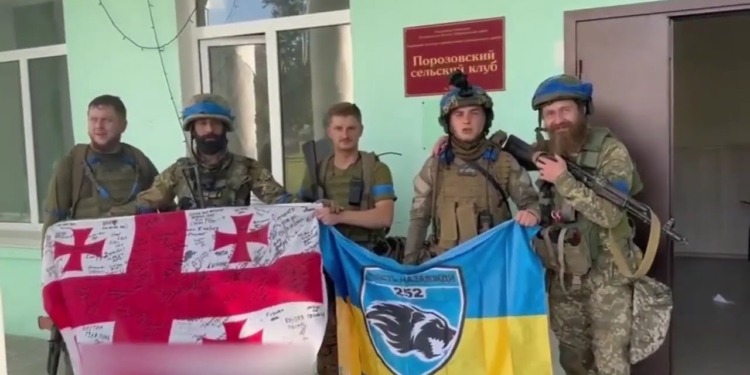UUkraine’s incursion into Russia’s Kursk region, which contains the Sudzha gas transit station, does not have material implications for Europe’s gas supply, Fitch Ratings says. Even a complete halt of supplies would have a limited impact on European offtakers. Gas transiting through the station was 14.6bcm in 2023, accounting for just 5% of EU demand.
Gas shipments are continuing despite the military activity, but if they stop, European buyers should be able to fill the gap with LNG shipments. High gas storage levels should also help to offset any immediate supply loss, and demand for natural gas remains significantly below pre-2022 levels. Transit of natural gas via Ukraine to Europe is due to stop at end-2024 following the expiry of the transit contract, which is unlikely to be renewed.
The EU imported 133bcm of LNG in 2023, which yielded a regasification infrastructure utilisation rate of 62%, and the LNG regasification infrastructure should already be comfortably sufficient to meet the extra demand to offset a halt in Russian supply.
The EU’s gas storage level remains healthy at 86% full, compared to 87% this time last year. We expect the level to reach almost 100% before the winter months, and storage should cover almost half of consumption from October to March, assuming demand is similar to last winter.
EU natural gas demand declined 3% year on year in 5M24, and was 24% lower than in 5M21 (pre-crisis). We assume demand in 2024 will be similar to that in 2023, dependent on weather patterns. European chemical companies reported increasing sales volumes in 2Q24 following weak sales in 2023 and early 2024 but demand remains sluggish. If the trend continues, natural gas demand, which has been declining since the start of the Russia-Ukraine war, may at best stabilise around 2023 levels.
European natural gas prices are around USD12.3 per thousand cubic feet (mcf), about 20% higher than in late July. However, the average year-to-date price is USD9.7/mcf, in line with Fitch’s current full-year price deck of USD10/mcf. We expect any price impact resulting from Ukraine’s incursion into the Kursk region to be short-lived. European natural gas prices remain volatile and subject to geopolitical developments and supply disruptions, including those that do not directly affect European supply routes. The increased tensions in the Middle East may also have a more pronounced effect on European gas prices in the coming weeks given the region’s large natural gas output.
Landlocked countries such as Austria, Slovakia and Hungary would be most exposed to a halt in Russian pipeline gas flows via Ukraine. However, Austrian oil and gas company OMV was recently granted additional rights for European natural gas transport capacity, and Austria has enough gas storage capacity for almost an entire year’s consumption.
Hungary has access to Russian gas from the TurkStream pipeline and several gas interconnectors with neighbouring countries. In Slovakia, disruptions to Russian flows could be offset with higher flows through transit routes sourcing gas from Polish and Croatian LNG terminals, and the potential reversal of flow through a pipeline that is currently shipping Russian gas further west.
Russia’s invasion of Ukraine led to an unprecedented energy crisis in 2022. Russian producer Gazprom slashed natural gas exports to Europe by 90%, expecting to deflect western military and political support for Ukraine.
The war thus led to record natural gas prices around the world, as Europe scrambled to secure alternative volumes. These higher costs also had a major impact in other key areas such as fertilizers and petrochemicals.
Although prices have since retracted, the damage remains, shown by sluggish demand levels, while the outlook is equally subdued – and not just in Europe. The World Bank has again revised down its global GDP forecast, to 2.4%, warning that the past five years will have seen the slowest half-decade of growth for 30 years.
How vulnerable are energy and energy-related Russian supplies to disruptions?
Europe has historically depended for close to 40% of its annual gas consumption on Russian supplies, imported via four routes – Ukraine, Belarus-Poland as well as the Nord Stream 1 and TurkStream corridors linking Russia to Germany and Turkey via the Baltic and Black Sea, respectively.
Overall Russian pipeline supplies were limited throughout 2021 and further reduced in 2022. By the end of last year Russian pipeline supplies fell to less than 10% of Europe’s total gas imports compared to 40% in the previous year.
Russian volumes shipped through Ukraine to Europe are now at third of what they should be as part of a five-year transit agreement
Russia has banned exports of gas to several EU countries, and the Nord Stream I and II pipelines have been damaged. In 2022 flows via Yamal and Nord Stream 1 stopped completely.
European petrochemicals players faced even higher gas prices as a result, though these have since collapsed to pre-war levels, though still above long-term averages. Fertilizer companies – where gas can account for 80% of costs – have been forced to curtail production. Chemicals were affected, especially those with high exposure to gas prices through utilities or feedstocks.
































Discussion about this post